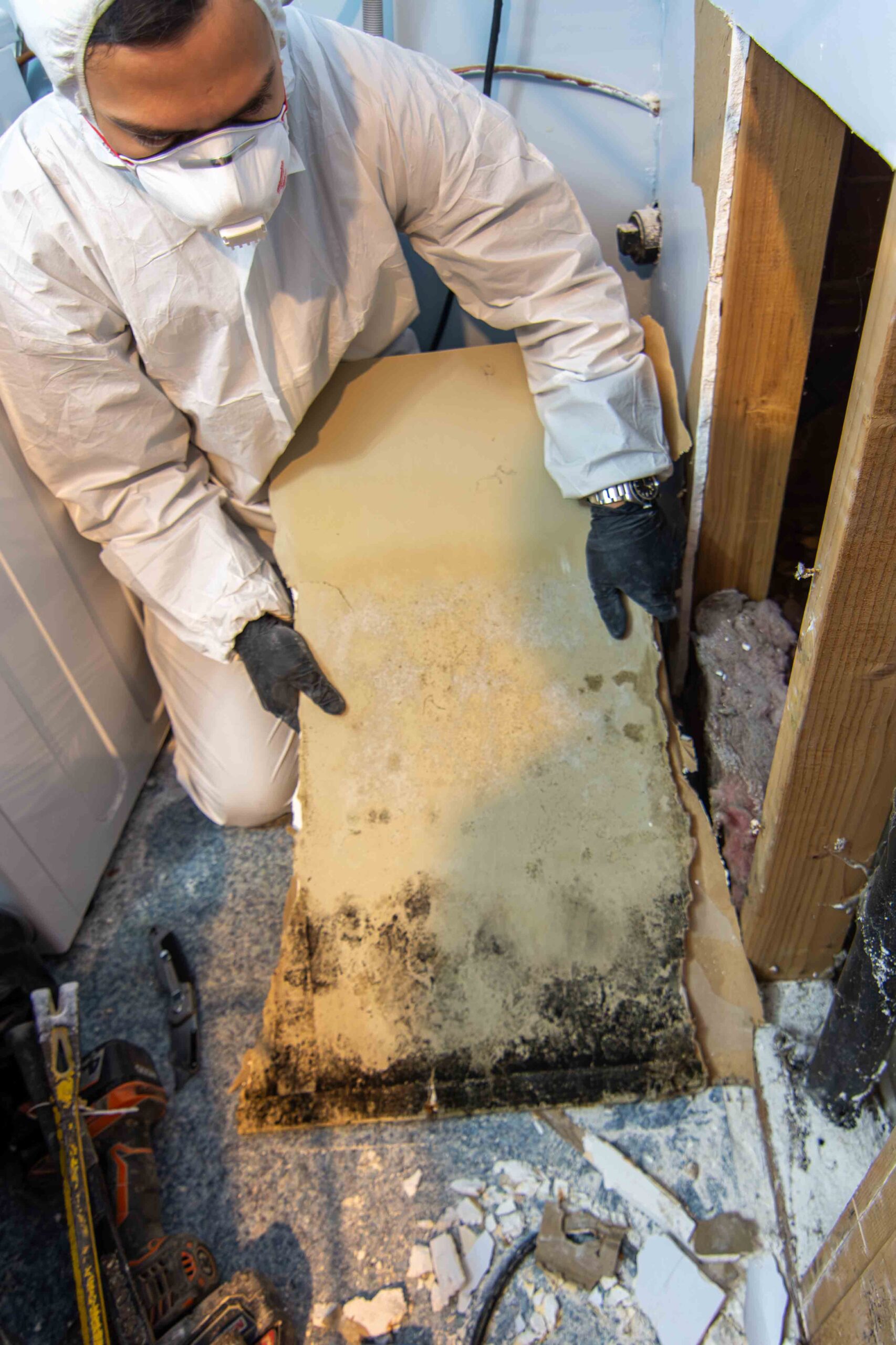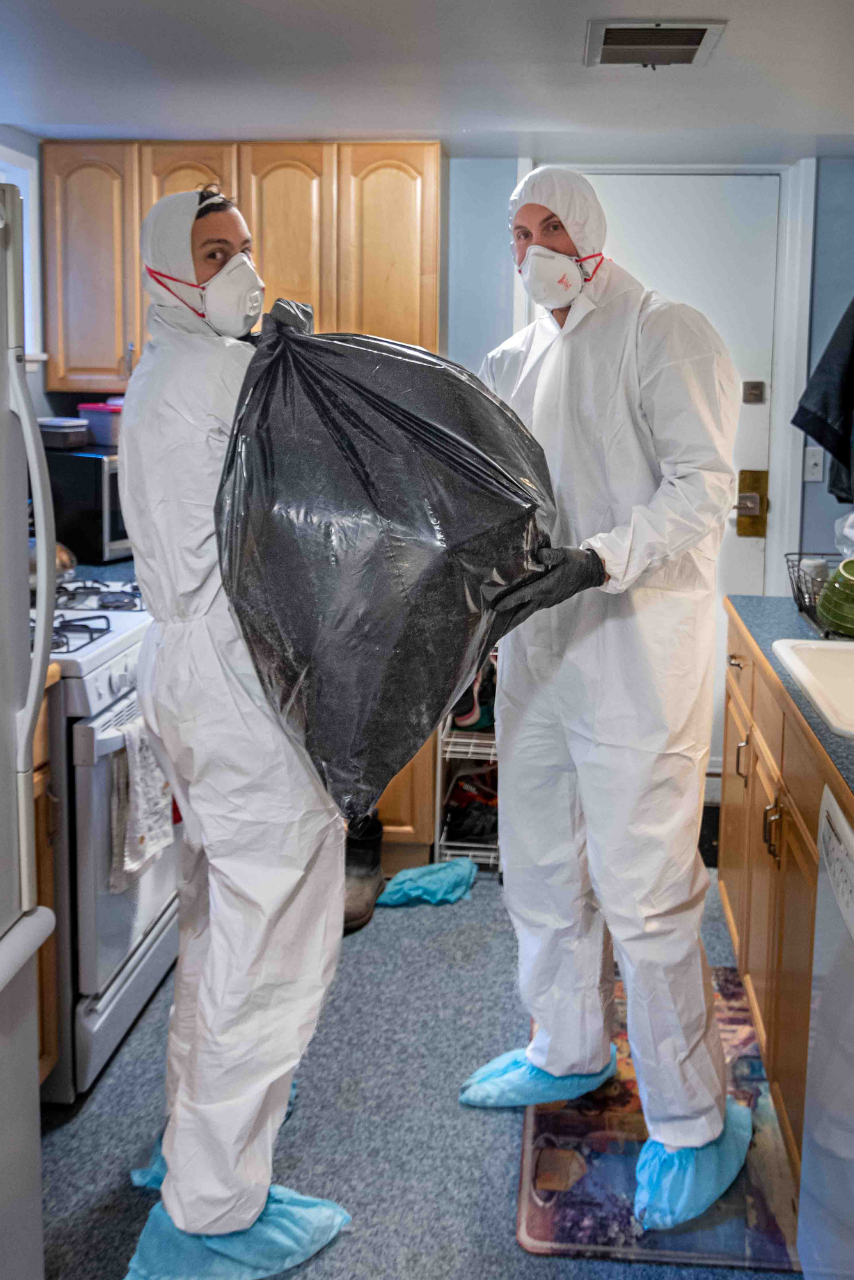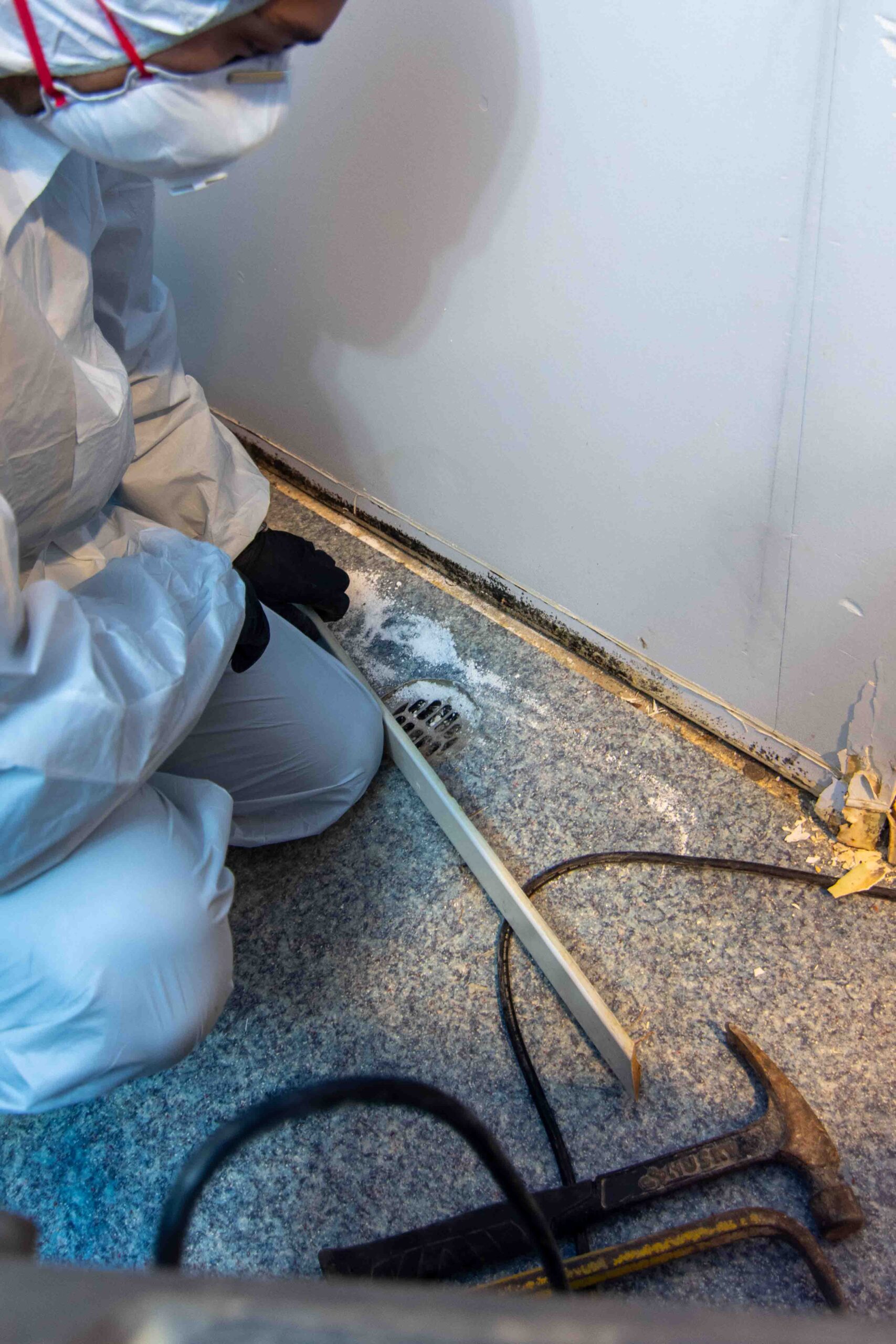Mold Removal: Identifying, Preventing and Removing
Mold growth can be a significant problem in homes, particularly in damp areas like basements. Beyond just being an eyesore, mold can pose serious health risks and damage to your property. Understanding how to identify and prevent mold growth is essential for maintaining a healthy living environment. Here’s a comprehensive guide on mold removal, prevention strategies, and remediation methods.
This is the most pivotal step in the mold remediation process. The act of physically removing materials which have been contaminated with mold sounds simple enough. However, great care and attention must be paid to prevent cross contamination into the unaffected areas of the home. The use of specialized equipment, personal protective equipment (PPE), detailed bagging/cleaning procedures, and proper encapsulation can be necessary to achieve a successful result. Make sure to consult our experts at Wet Basement Services for your mold removal needs.
Recognizing The Signs Of Mold Growth
Detecting mold early can help you take action before it becomes a more serious issue. Mold can thrive in dark, damp areas, often going unnoticed until it has already spread. Here are some key signs that you may have mold growing in your home:
Visible Mold
Finding visible mold growth is often the first indication of a problem. Mold can appear in various colors, including black, green, or white, and may have a fuzzy texture. Common areas to check include:
- Walls and Ceilings: Look for discoloration or stains.
- Basement Corners: Dark corners are prime spots for hidden mold.
- Behind Furniture: Mold can grow behind furniture, particularly in areas with poor ventilation.
Musty Odor
A persistent musty smell in your home can indicate mold presence, even if you can’t see it. This odor often comes from mold feeding on organic materials like wood, paper, and fabric.
Water Damage
If you notice water stains, peeling paint, or damp spots on walls or ceilings, these are strong indicators of moisture problems that can lead to mold growth. Pay close attention to:
- Leaking Pipes: Any leaks can contribute to moisture buildup.
- Condensation: Areas with high humidity, especially near windows or appliances, are more prone to mold.



Preventing Mold Growth
Preventing mold growth involves controlling moisture levels and maintaining a clean environment. Here are several strategies to keep mold at bay:
Maintain Low Humidity Levels
Mold thrives in humid conditions, so keeping humidity levels below 60% is crucial. You can achieve this by:
- Using Dehumidifiers: Invest in a quality dehumidifier for damp areas.
- Ventilating Rooms: Ensure proper ventilation in bathrooms, kitchens, and laundry rooms.
Address Water Intrusions
Fixing any water issues is critical in preventing mold. Regularly inspect your home for leaks, and consider the following:
- Seal Cracks and Gaps: Use caulk or sealant to fill any gaps in walls, foundations, or windows.
- Install Sump Pumps: In areas prone to flooding, sump pumps can help remove excess water.
Clean Regularly
Regular cleaning helps prevent the buildup of dust and organic materials that mold feeds on. Focus on:
- Dusting and Vacuuming: Keep surfaces free of dust and debris.
- Washing Fabrics: Regularly wash curtains, carpets, and upholstery to eliminate mold spores.
Remediating Mold In Your Home
If you discover mold, prompt remediation is essential. Depending on the extent of the problem, you may choose to tackle it yourself or call in professionals. Here’s a step-by-step guide for effective mold remediation:
Assess the Extent of Mold Growth
Before beginning the remediation process, assess how much mold is present. If the area is larger than 10 square feet or if mold is in HVAC systems, it’s best to hire a professional.
Prepare for Cleanup
- Protect Yourself: Wear gloves, a mask, and goggles to protect against mold spores.
- Seal Off the Area: Use plastic sheeting to contain the area and prevent spores from spreading.
Clean and Remove Mold
- Use Mold Cleaners: Use a solution of water and detergent or a commercial mold cleaner to scrub the affected areas. For porous materials like drywall, removal may be necessary.
- Disinfect with Bleach: If using bleach, mix one cup of bleach with a gallon of water. Apply it to hard surfaces and allow it to sit for 10 minutes before rinsing.
Dry the Area Thoroughly
After cleaning, ensure the area is completely dry to prevent mold from returning. Use fans or dehumidifiers to expedite the drying process.
Dispose of Contaminated Materials
Remove and properly dispose of any items that are heavily infested with mold, such as carpets, ceiling tiles, or insulation.
Long-Term Solutions For Mold Prevention
To ensure mold doesn’t return after remediation, consider implementing these long-term strategies:
Invest in Professional Solutions
For permanent results, consult with our mold remediation specialists who can provide thorough inspections and remediation services. They can also help identify areas of your home that may be prone to mold in the future.
Regular Maintenance
Ongoing maintenance is key to preventing mold growth. Schedule regular inspections of your home for moisture issues and ensure that your gutters, downspouts, and landscaping direct water away from your foundation.
Educate Yourself and Family
Understanding the causes and signs of mold growth will empower you and your family to take action quickly if you notice any issues. Regularly discuss and reinforce these strategies to keep your home safe and healthy.
Mold removal and prevention require a proactive approach. By recognizing the signs of mold, implementing preventive measures, and effectively remediating any issues, you can ensure a healthy and mold-free home environment. If you need help with mold problems, don’t hesitate to reach out to us for our professional service to address your concerns effectively.
